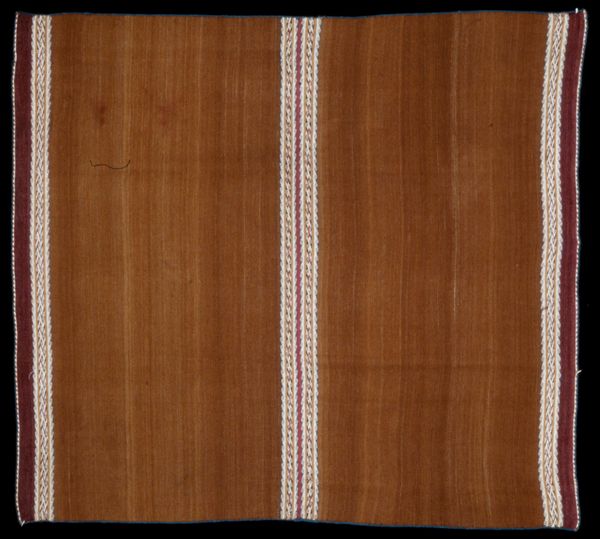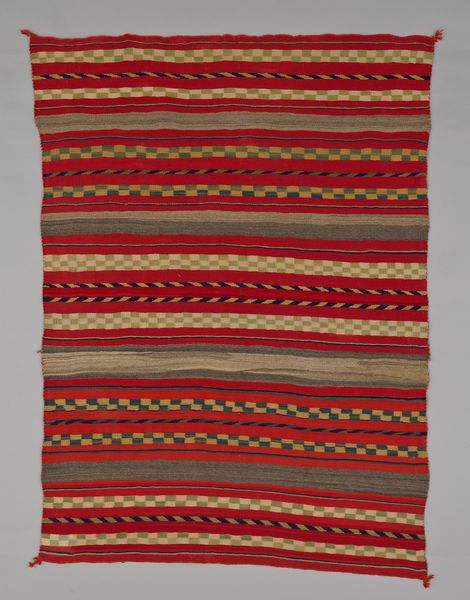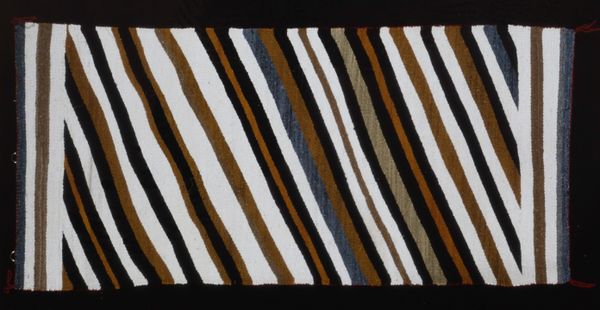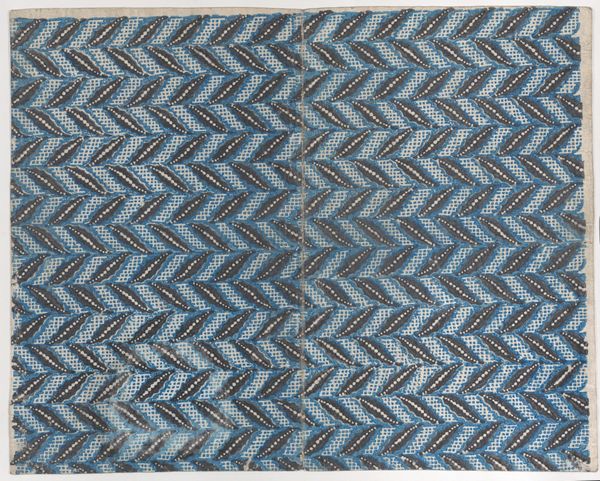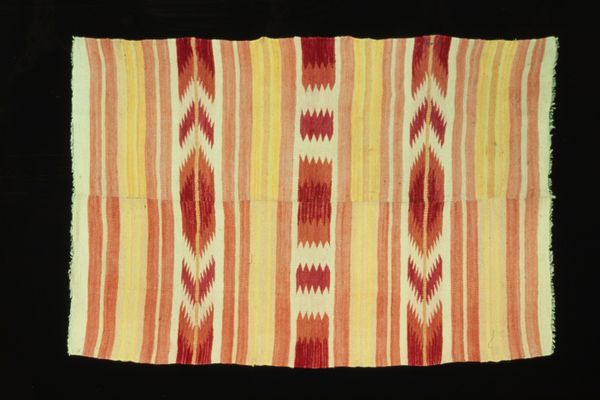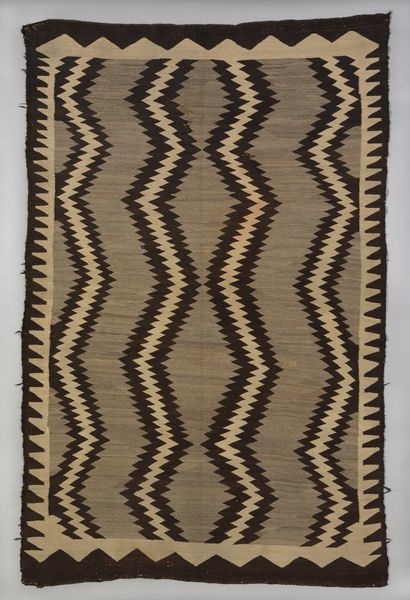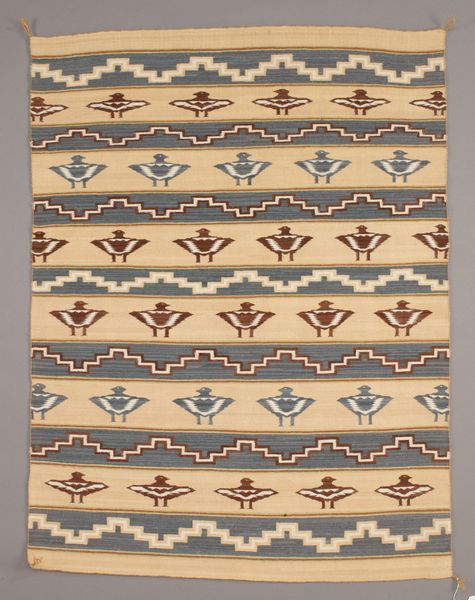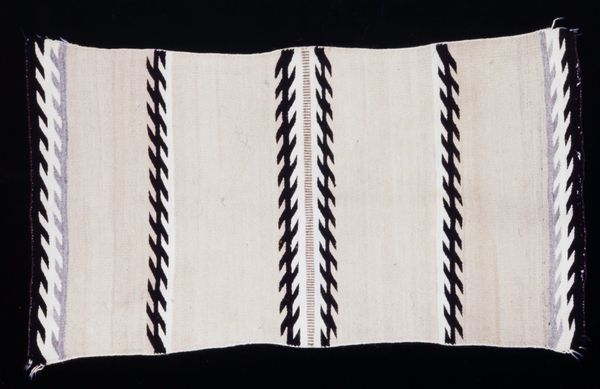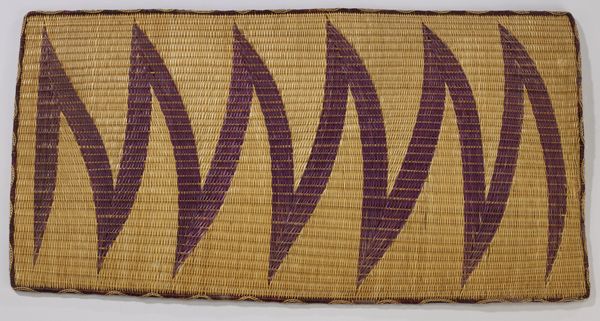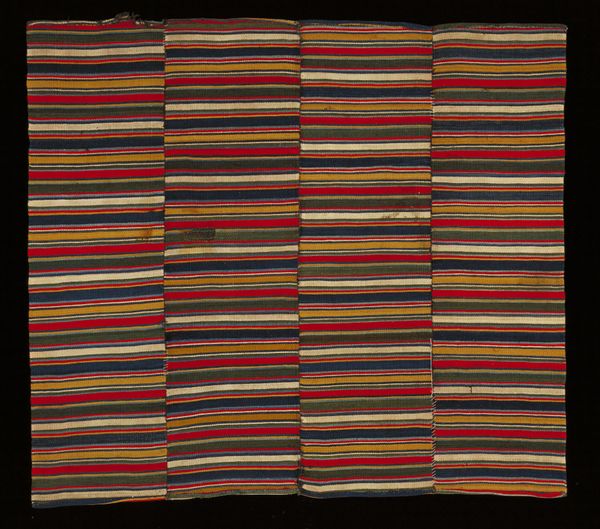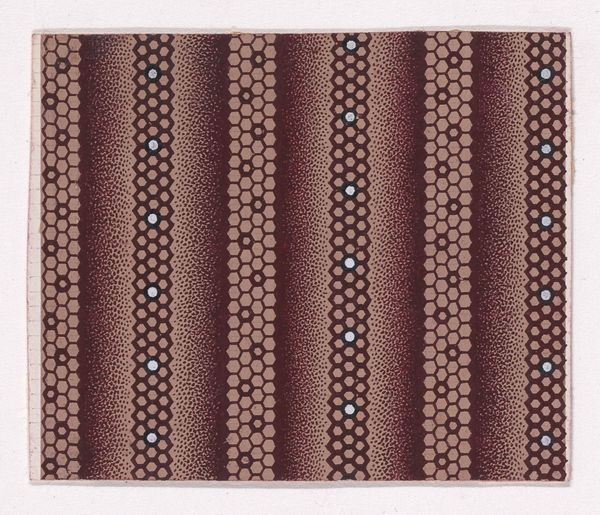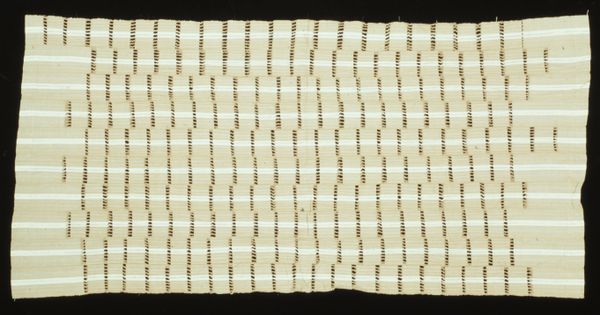
fibre-art, weaving, textile
#
fibre-art
#
textile
#
weaving
#
textile
#
geometric
#
textile design
#
indigenous-americas
Dimensions: 101 11/16 × 61 1/2 in. (258.29 × 156.21 cm)
Copyright: Public Domain
Curator: Looking at this rug, a striking piece of textile art from the Diné, also known as the Navajo people, I’m immediately drawn to the rhythm of the vertical stripes. Editor: My eye is caught by the subtle color variations. The palette is quite muted and earthy, it brings to mind a tranquil desert landscape. Curator: Precisely. Textiles such as this, while functional, also operated within a complex economy of trade, reflecting evolving markets and intercultural exchange. Notice how the materials would have been sourced and prepared— the hand-spun wool, likely dyed with natural pigments. That's where much of its significance lies. Editor: Do you see any suggestion of influences or narratives in these textiles? Curator: Navajo weaving traditions have always been intertwined with cultural narratives. Examining this rug through that lens of Indigenous artistic practices, its origins become clear and can allow a much fuller engagement with its design. The textiles served, still do, many purposes for the weaver, their family, and community, it’s fascinating when we approach works like this with a deeper sensitivity towards these narratives and functions, rather than solely aesthetic evaluation. Editor: And considering its display within a museum setting, how might the public encounter with this rug shape its ongoing cultural value? Curator: Well, in institutions like this one here in Minneapolis, display and interpretation both profoundly influence and alter perceptions. It becomes a historical artifact divorced, in some ways, from its original purpose, now carrying symbolic weight tied to the legacy of the Navajo Nation and their art practices, to the labor, creativity and endurance inherent in these forms of Indigenous expression. Editor: So, while aesthetically beautiful, its real value is within that act of making and sharing. The intersection of the community, weaver, buyer, museum, and ultimately us. Curator: Exactly. It serves as a reminder of cultural resilience and artistic innovation within specific communities. Editor: Absolutely. Looking closer has certainly revealed a depth of layers that simple aesthetics don't capture. Curator: I agree completely. Considering its history adds considerable resonance.
Comments
No comments
Be the first to comment and join the conversation on the ultimate creative platform.
